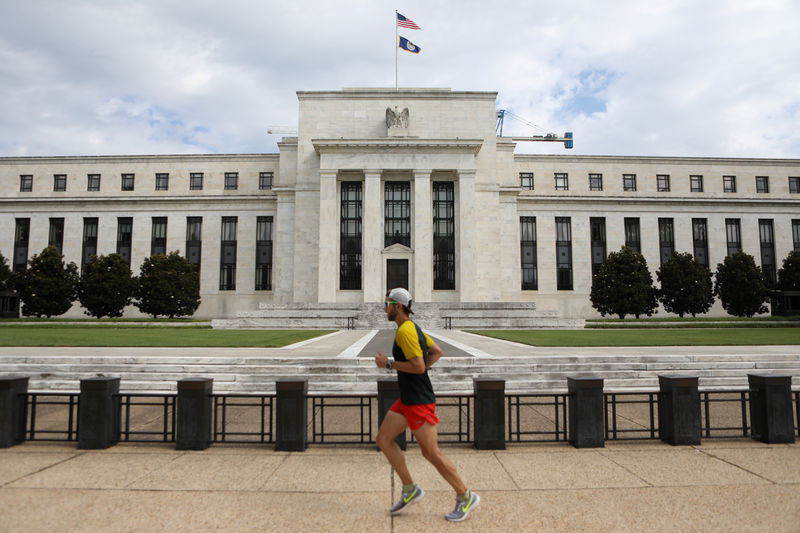Investing.com– The Federal Reserve is now expected to begin cutting interest rates in May 2024, according to the CME Fedwatch tool, after Chair Jerome Powell shot down bets on a March rate cut on Wednesday.
The Fed Fund futures traders pricing in a 60.8% chance that the Fed will cut interest rates by 25 basis points to a range of 5% to 5.25%.
The central bank is now widely expected to keep rates on hold in March- a sharp reversal from earlier bets for a 25 bps cut. Traders had trimmed these bets in the lead-up to Wednesday’s meeting, with Powell’s comments cementing expectations for a hold.
But while Powell downplayed expectations for a March rate cut, he still noted that the bank had made good progress in its fight against inflation, after it began hiking rates in 2022.
Powell also noted that inflation was moving closer to the Fed’s annual target, and that the meeting of those targets will spark monetary easing.
Powell’s comments spurred expectations that the Fed will still trim rates substantially in 2024. The CME Fedwatch tool shows that traders are pricing in the possibility of the U.S. benchmark rate ending 2024 in a range of 3.75% to 4%.
Goldman Sachs analysts said they now expect the central bank to begin cutting rates only in May. But they maintained their forecast for at least five rate cuts this year, and that after May, the central bank will cut rates in June, July, September and December this year.
ING analysts also said that the bank will likely begin trimming rates by May, and that they expected inflation to have cooled substantially by then.
“By May we think ongoing subdued core inflation measures will give the Fed the confidence to cut with the policy rate getting down to 4% by the end of this year… if the economy does enter a more troubled period and the Fed needs to move into ‘stimulative’ territory there is scope for much deeper cuts than we are forecasting,” ING analysts said in a note on Wednesday’s Fed meeting.
While the Fed is still expected to trim rates eventually this year, expectations of higher rates in the near-term triggered a sharp pullback in risk-driven assets on Wednesday, particularly U.S. stocks. The and the lost 0.8% and 1.6%, respectively, while the technology-heavy shed 2.2%.
In contrast, the shot up and hovered near a seven-week high.
Read the full article here
